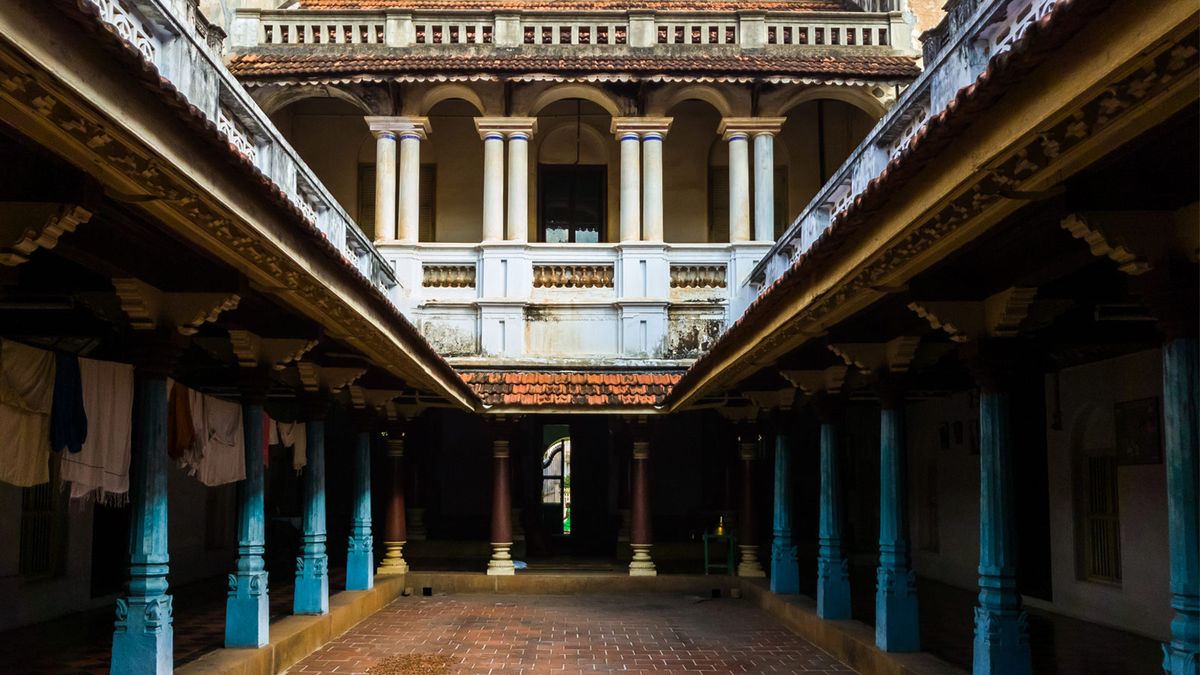It is not an understatement to say that travelling within India is a unique experience quite like none other. With its mind-blowing diversity, India offers a host of experiences that ticks off a whole lot of boxes be it history, architecture, craft, culture or food. And one such destination is Chettinad located in the central region of Tamil Nadu.
Also known as Chettinadu, this one is a region located mainly in the Sivaganga and part of the Pudukkottai districts of Tamil Nadu. It consists of around 70 villages and is the home of the Nattukotai Chettiar community who were extremely successful merchants and businessmen. They were involved mainly in trade and banking and frequently travelled to countries like Burma, Ceylon and Malaysia in the 19th and early 20th century.
Situated about 400 km from the state capital, Chennai, the main towns of Chettinad include Karaikudi, Kanadukathan and Devakottai. A picture of perfect harmony with well-planned streets in grid pattern, houses against street axis and palatial mansions, the region is home to some distinctive temples, niche crafts and delectable cuisine. Here is a quick look at some of the best things you can do while here.
Chettinad mansions: Reflections of a glorious past
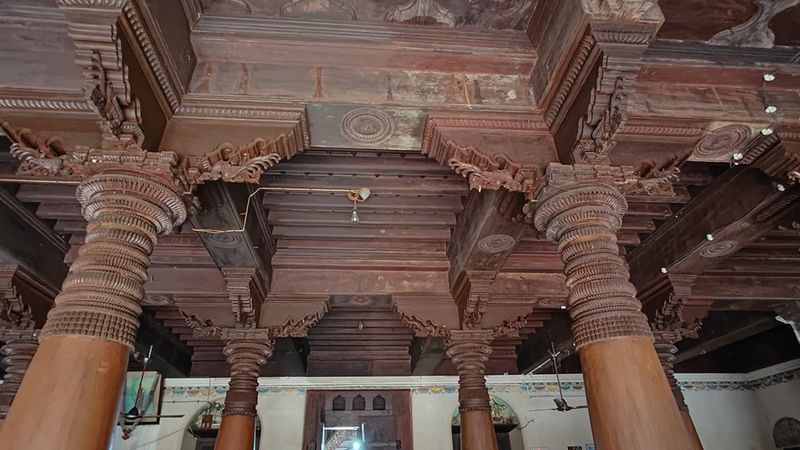
The affluent Nattukottai Chettiar merchants were an entrepreneurial community who amassed wealth by trading in spices and gems. They travelled far and wide and bought back riches which were used to build palatial homes. Replete with Burma teak, Belgium mirrors and Italian marble, these humongous structures whose facades bore sculptures of Gods and Goddesses, had the perfect mix of traditional and contemporary elements. A walk along the deserted lanes of towns like Kanadukathan and Karaikudi is a treat for heritage lovers. Houses with stuccos, monkey tops, intricately carved pillars and enigmatic courtyards which were once a hive of activity are now mere symbols of a glorious past.
Once a picture of magnificence, most of these mansions today are in varying stages of deterioration as most of the owners have migrated to other places leaving them with caretakers. A few are well maintained while some others have been converted to boutique hotels.
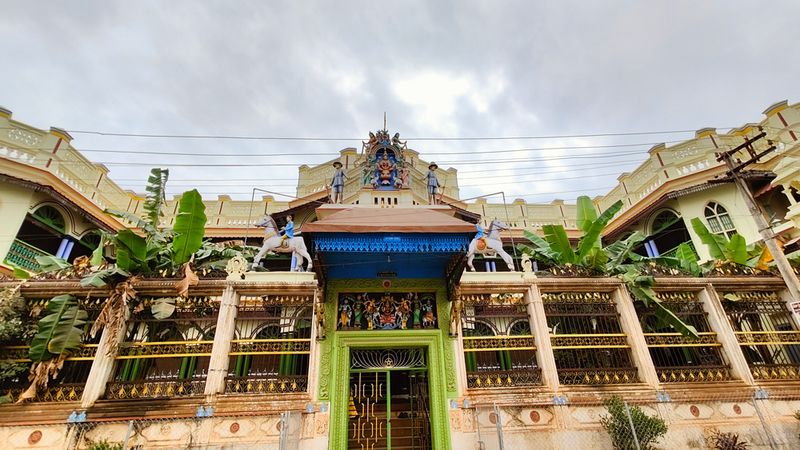
The Athangudi Palace is the epitome of grandeur and boasts of a harmonious fusion of European and Indian architecture. The AVR house, Ramanathan Chettiar's house, Visalam, built for his eldest daughter, Visalakshi, now converted to a heritage hotel as well as the Kanadukathan Palace are some of the well-maintained glorious structures in the region.
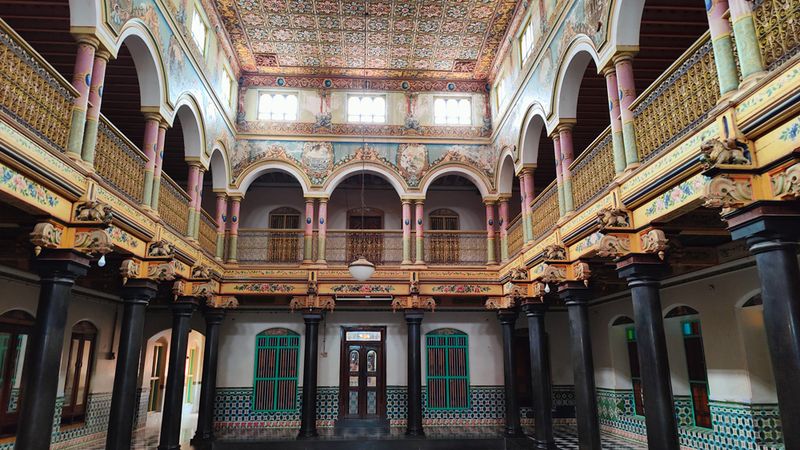
Temple hopping
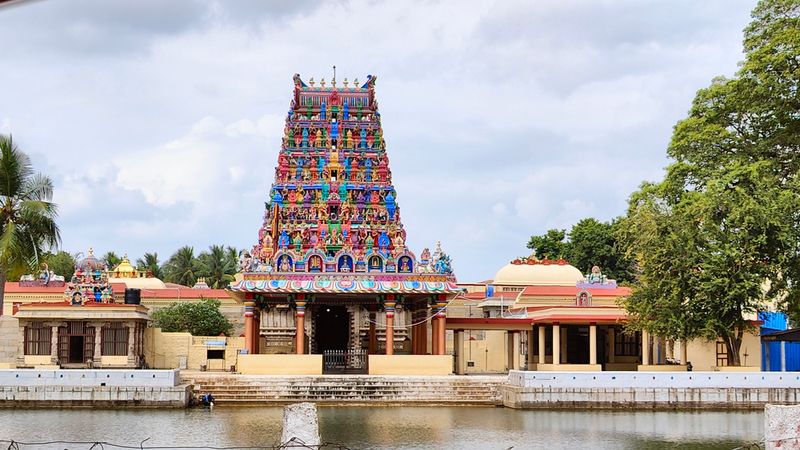
The Chettiars also known as Nagarathars are ardent followers of Lord Vishnu and are intrinsically associated with the clan temples of the region. There are nine major clan temples and each of them has been constructed in a manner that is utterly resplendent. With vibrant frescoes decorating the walls and intricate sculptures adorning the nooks and corners, these temples mainly built by the Pandya kings have brightly painted exteriors and interiors. It is interesting to note that these temples also have large tanks or reservoirs attached to them. Locally called “oorani” they are usually filled with blooms of water lilies and form a truly picturesque sight. If you do not have the time to visit all nine, do make time for the Pillaiyarpatti temple dedicated to Lord Ganesha. Deemed to be highly auspicious, it is also known as Sri Karpaga Vinayagar Temple.
If you are a fan of history and architecture then the Vijayalaya Choleeswaram in Narthamalai must be on your list. One of the earliest temples built by the Cholas, this one dates back to the 8th century. An early example of Chola style of architecture, this impressive stone temple is dedicated to Lord Shiva and has been crafted in the Dravidian and rock cut style of architecture. It also houses the 8th century Jain cave temples. With intriguing sculptures of elephants and yaalis adorning the entire temple complex, this one is situated on a hillock and is accessible via a short trek.
The Ayyanar or Terracotta Horse Temple is yet another unique sight in Chettinad. Locally called the Andavar Solai temple, this is dedicated to the village or guardian deity who is believed to protect the village by warding off evil spirits and blessing it with good rain and harvest. Devotees offer horses crafted by the local potter community in brightly coloured terracotta as a gesture of thanks giving. As a result, one can find scores of horses lined up all around the temple.
Exploring native crafts
If local crafts are your calling, Chettinad does not disappoint. The region has a rich heritage of handloom weaving and is renowned for its cotton sarees that are handwoven on pit looms using the flying shuttle weaving technique. Known for their vibrant colours, contrast borders and elegant pallus the sarees have high thread counts and are extremely comfortable during both summers as well as the colder months.

The region also has a tradition of basket weaving which is done using palmyra leaves. Known as kottans, these baskets were earlier made by the Chettiar housewives. While the palmyra leaf basket is still available, the craft today has taken a contemporary form with synthetic fibre, unusual shapes and attractive colours. Nevertheless, these kottans which are a perfect blend of aesthetics and functionality, help preserve this ancient technique of weaving.

Athangudi Tiles is yet another distinctive craft native to Chettinad. These are highly attractive handmade tiles replete with colourful geometric patterns normally done in hues of red, green and mustard. Made using a mixture of sand, grey cement, white cement, colouring oxide and the local soil, these tiles have an innate shine that gets better with time.
Sampling local fare
Known for its bold and complex flavours, the cuisine of Chettinad is indeed a treat for the senses. The region makes extensive use of tamarind, red chillies and a host of spices including star anise, kalpasi (black stone flower) and marathi moggu (dried flower pods) apart from pepper, cloves, bay leaf etc. Most dishes score high on the spice quotient and this fiery base which also includes tomato, coconut, garlic and ginger is what adds depth to most of the dishes. The fare includes a wide range of vegetarian and non-vegetarian dishes Idiyappam, Paal Payasam, Chicken Chettinad, Urlai Roast, 'Kuzhi Paniyaram, Chettinad Kara Kuzhambu etc.


